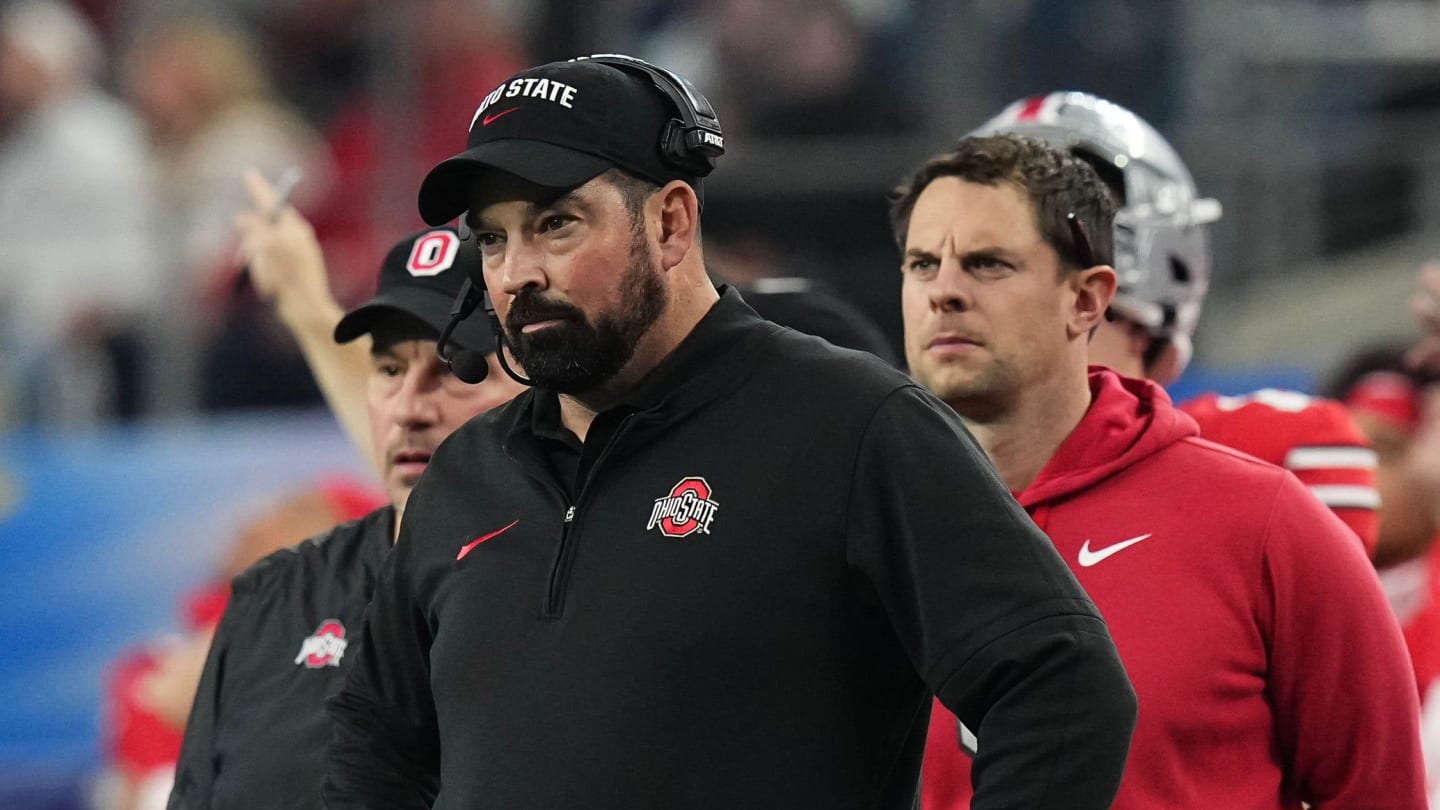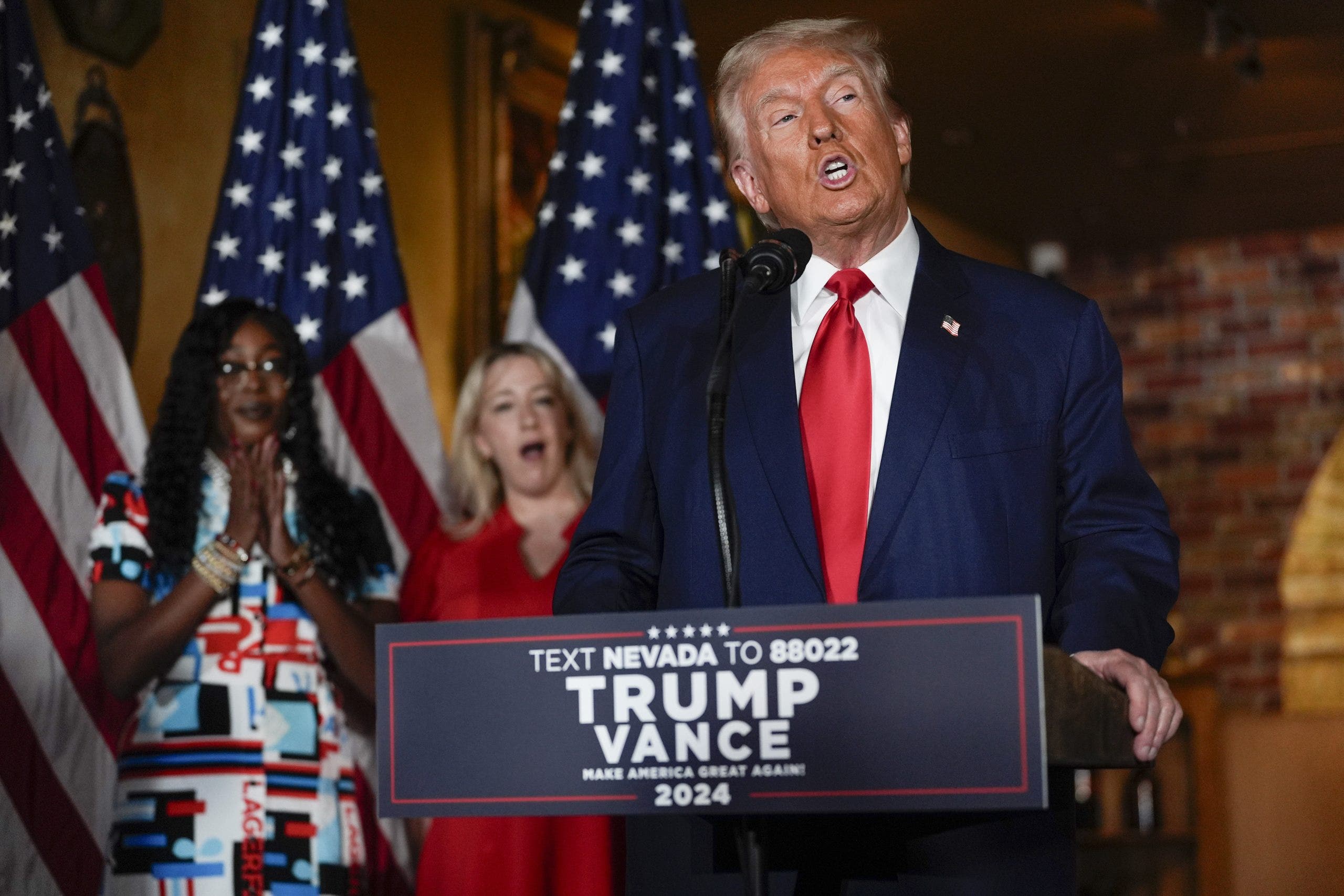Entertainment
In rare initiative, Hammer Museum, LACMA and MOCA to share collection gifted by Jarl and Pamela Mohn
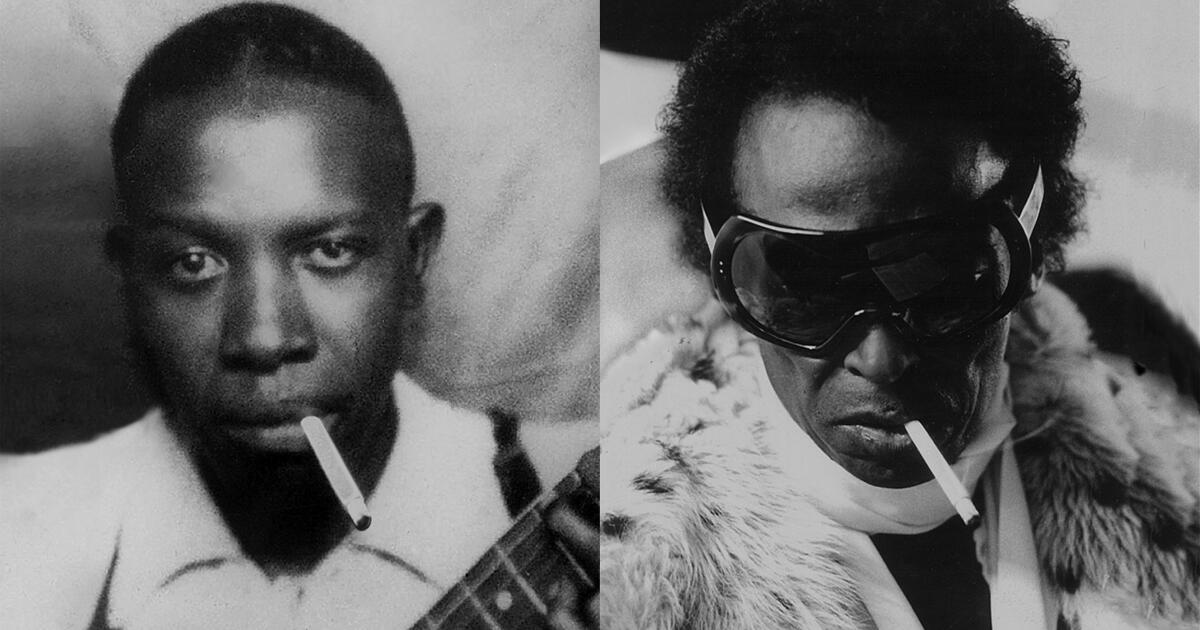
Collaboration among L.A.’s top art institutions reached new heights Monday as the Hammer Museum, the Los Angeles County Museum of Art and the Museum of Contemporary Art announced the joint ownership and management of a collection of 260 works of art gifted by philanthropists Jarl and Pamela Mohn.
The collection — consisting entirely of works by L.A.-based artists — has been accumulated by the Mohns over the last two decades and is being called the Mohn Art Collective: Hammer, LACMA, MOCA, or MAC3. The gift is accompanied by a $15-million to $20-million endowment for future acquisitions and is designed for annual growth. It also covers expenses incurred for storage and care of the art.
“I don’t want it to be a burden,” Jarl Mohn told The Times about his decision to pair MAC3 with an endowment. “I want this to be a really joyful experience and not a heavy lift for the institutions.”
Mohn said the endowment is larger than “all the things I’ve supported at all the art institutions in L.A., in the aggregate over the last 20 years.”
Mohn added that he wasn’t sure of the market value of the MAC3 collection, which was in the process of being appraised. He expected to know within the next four months.
The Hammer is augmenting the MAC3 collection with 80 works it has collected over the 12 years it has been staging its “Made in L.A.” biennials. An additional 16 pieces have been added to the collection from “Made in L.A. 2023” by curators from all three museums — for a total of 356 paintings, sculptures and mixed media works.
Mohn recounted walking through the Hammer at the end of last year’s “Made in L.A.” with its director, Ann Philbin, along with LACMA and MOCA Directors Michael Govan and Johanna Burton, respectively, and their chief curators.
“And then we sat in a conference room, we had lunch, we talked for three hours and we voted,” Mohn said.
“Untitled” (1971) by Luchita Hurtado is one of the paintings gifted by philanthropists Jarl and Pamela Mohn to the Hammer, LACMA and MOCA.
( From the Estate of Luchita Hurtado and Hauser & Wirth)
Curators from each museum will jointly decide what to acquire each year going forward — with the sole stipulations being that the works be by L.A. artists and that every other year, acquisitions will be culled from future “Made in L.A.” biennials. Each institution will have access to the full collection for display, and arrangements will be made for the collection to be lent to museums globally — with financial aid offered to small institutions without the means to support such a program.
The MAC3 collection currently includes work by Lauren Halsey, rafa esparza, Aria Dean, Karon Davis, Martine Syms, Mark Grotjahn, Silke Otto-Knapp, Rodney McMillian, Analia Saban, Cauleen Smith, Luchita Hurtado and Kandis Williams. One of MAC3’s goals is to entice other collectors to donate additional works, creating an ongoing commitment to L.A. artists and the city’s art ecosystem.
Mohn said this collection has been decades in the making.
“I decided to build a collection around emerging L.A. artists because we’re all lucky that we live in a place like this where there’s something happening,” he said. “It’s like being in New York when the Abstract Expressionist movement was happening or in Paris around the turn of the century with the advent of Cubism.”
The idea for MAC3 fell into place over the last 18 months, Mohn said. He considers L.A.’s art scene to be remarkably harmonious, and he noted that all three museum directors quickly supported the idea. He doesn’t foresee a scenario in which the museums find themselves competing for the collection but rather envisions a future where all three institutions feature a few pieces in various shows according to theme. Govan, for example, has requested access to a particular piece intended to occupy a prime spot when the new David Geffen Galleries open at LACMA.
“I said, ‘Great, we’ll put it in the collection, but it’ll be for everybody,’” Mohn said of Govan’s request. “‘But this is something you wanted first, so you got first dibs on it,’ but [the museums] have been so collaborative and so cooperative, working with each other … it really is exactly as I had envisioned it would go.”
MAC3 is in line with the collaborative ethos espoused by major L.A. institutions, which have long worked together on citywide art festivals and projects, including the Getty’s massive “PST Art,” which opens next month with dozens of exhibits and programs scheduled for museums and public spaces across Southern California. Govan also has talked often about his goal of implementing a “strategic plan of regional partnerships” with museums throughout the area in order to better showcase LACMA’s vast collection.
The Mohns have a history of boosting local art and artists. They have provided significant financial support for “Made in L.A.” since its 2012 inauguration. They also support three awards given to L.A. artists — the Mohn Award, the Career Achievement Award and the Public Recognition Award. They have contributed financially to institutions such as the Institute of Contemporary Art, Los Angeles; the Brick; and Los Angeles Nomadic Division.

Movie Reviews
‘I’ll Be Right There’ Review: Edie Falco Leads a Wry Comedy as the Wise and Weary Heart of a Family

In one of the best scenes in I’ll Be Right There, a character reveals a family story involving an improbable getaway driver. Taking in this tale is her middle-aged daughter, who knows a thing or two about driving — although her role behind the wheel is more along the lines of schlepping to and fro than making a break for it. These two strong women are played, respectively, by Jeannie Berlin and Edie Falco, actors of ineffable down-to-earth zing. When, later in the movie, the screen fills with a slo-mo shot of them running side by side down a hospital corridor, it feels like a winking, loving gift, one of the giddy dividends from this wry take on family and midlife anxieties.
Set and shot in a Northeastern hamlet (Pearl River, in New York’s Rockland County), director Brendan Walsh’s second feature (after Centigrade) is a modestly scaled affair that benefits from its unfussy sense of place and its superb casting. I’ll Be Right There navigates a territory between comforting and thorny — much as its central character, Falco’s Wanda, weary of being the voice of reason in the midst of a whole lotta drama, balances reasonable exasperation and deep wells of patience while tending to one family member in distress after another.
I’ll Be Right There
The Bottom Line Modest and well grounded.
Release date: Friday, Sept. 6
Cast: Edie Falco, Jeannie Berlin, Kayli Carter, Charlie Tahan, Michael Beach, Sepideh Moafi, Michael Rapaport, Bradley Whitford
Director: Brendan Walsh
Screenwriter: Jim Beggarly
1 hour 38 minutes
Wanda is the divorced mother of two sort-of grown-up kids. Daughter Sarah (Kayli Carter) is eight months pregnant and has her heart set on a church wedding, before her due date, to Eugene (Jack Mulhern), an even-keeled fellow as easygoing as she is given to hysteria. Wanda’s floundering son, Mark (Charlie Tahan of Ozark, who will reunite with Carter in the Bob Dylan biopic A Complete Unknown), has overcome problems with addiction but maintains a slippery relationship with the truth, to the chagrin of his therapist (Geoffrey Owens).
Wanda’s ex-husband, Henry (Bradley Whitford), has his hands full with a new brood of kids and is a bit of a whining kid himself. Her mild-mannered boyfriend, Marshall, played with unexpected restraint by Michael Rapaport, is in the quiet grip of some sort of existential angst. He blurts out a non sequitur marriage proposal and then, in the next breath, rescinds it, embarrassed that he’s overstepped. Even if she weren’t cheating on Marshall, having recently discovered her Sapphic side, marrying him would be the last thing on Wanda’s list of goals. If she had one.
Her relationship with young college professor Sophie (Sepideh Moafi, of Black Bird and The Killing of Two Lovers) is a secret, but not one that she’s guarding too closely. Henry’s and Sarah’s responses to the revelation are sharply written and played, but more to the point is Wanda’s dawning realization that the romance isn’t all that. Sophie, who excels at compartmentalizing, tends to show up on Wanda’s front porch at odd hours, sometimes drunk and always horny.
And then there’s Wanda’s new friendship with Albert (Michael Beach), a high school classmate who recently returned to town. Though his being a firefighter and a devoted divorced dad might be a too-easy shorthand for earnest, solid goodness, there’s also something fresh and winning in the way he’s both flustered and impressed when Wanda mentions her bisexual dating status.
Working from a screenplay by Jim Beggarly (A Country Called Home, A Year and Change), Walsh struggles in the early going to strike the desired tone between dark comedy and something more anodyne — even with Falco and Berlin at the center of the opening sequence, which revolves around 68-year-old Grace (Berlin) receiving a cancer diagnosis that’s better than the one she expected. The gallows humor feels strained, and the insistent chirpiness of James Righton’s score is too much. Things settle down and find their footing with Tahan’s first scene, which provides a jolt of more complicated humor.
Responding to various SOS messages from Grace, Sarah and Mark at all hours, Wanda is always on call; the movie’s title expresses an emotional refrain. At the helm of her blue station wagon, she spends good portions of her days crisscrossing town to provide comfort and rescue. It’s at night that she does her work as a bookkeeper. The scenes of her doing the books at bars and restaurants in the small downtown are alive with something workaday yet unexpected, captured with vibrancy in Aaron Medick’s camerawork, while Righton’s score takes on an angsty and effective undertow. (Elsewhere it hits pitch-perfect comic notes.) There’s family quality time, too, captured in scenes at a local ice cream place, where three generations of women talk about, or around, what’s going on. Or what went on decades earlier.
It would be an exaggeration to call this feature an actors’ showcase, but it’s certainly an actors’ movie, which might explain the involvement as exec producers of Falco and Jesse Eisenberg (who appeared in Free Samples, Beggarly’s first produced screenplay). In addition to Wanda’s interactions with other characters — complete with eye-rolls and precision application of the skeptical raised eyebrow — Falco finds the subtle edge in a couple of breakthrough breakdowns, with Rapaport and Berlin each providing the perfect counterbalance. Falco and Whitford are spot-on in the choice scenes they share, effortlessly slipping into the well-worn grooves and rhythms of their characters’ animosity.
Carter and Tahan lend nuance to their more broadly written roles, while Berlin keeps you hooked with everything about her — not least the syncopated rhythms of her line readings, especially when the lines have built-in snap. “It’s not gambling,” the casino habitué tells her daughter, “if you know how to play.”
Falco, involving as ever, might not be engaged in a wild gamble here, but there’s a certain risk in the ways that she and the movie circle a neat conclusion. And there’s wisdom in the way they wind up somewhere far messier, sweeter and more satisfying.
Movie Reviews
THE CROW (2024) Review

Dominant Worldview and Other Worldview Content/Elements:
Strong pagan worldview with strong false religion/theology and strong occult elements but mixed with some Christian and moral elements, including some Christian symbols and metaphors in a dark battle against demonic evil, which posits a world where, sometimes, a dead person with intense feelings of love for another person or other people who died can return to life and set things right in a story about an evil man has made a pact with the Devil and has killed a young man’s “soul mate” lover, young man returns to life to obtain justice for his lover and save them both from Hell and movie creates sympathy for the hero to defeat the evil villain and save his lover, but something goes wrong and the young man is doomed to never to rejoin his lover after she resurrects, and so he sacrifices himself to be doomed to save her, but he still hopes that one day they will reunite in Heaven or the Afterlife, plus there are some Romantic notions about innocence and love mixed in within the movie’s worldview content;
Foul Language:
At least 39 obscenities (including many “f” words) and one strong profanity using the name of Jesus;
Violence:
Lots of extreme violence (among the most brutal we’ve ever seen at MOVIEGUIDE® in its history), and some strong violence includes two young lovers are captured and suffocated to death using two plastic bags in pretty graphic scene, and the title character shoots many bad guys to death in brutal ways, the most brutal such deaths occur in lengthy battle in lobby of opera house while opera is performed with the title character comes back to life and can’t be killed, stabbing many bad guys to death with a samurai sword and shooting bad guys in brutal ways including inserting the sword into one bad guy’s mouth and splitting another guy’s head, bad guys shoot the title character multiple times but he can’t be killed though he often stumbles and falls then rises again, bad guy stabs the title character through the chest with the character’s own sword, but the title character survives, title character breaks arms and legs of some bad guys during all the fighting, bad guy shoots a friend of the title character’s through the head, brutal fight between the title character and the main villain, people descend downward into deep water that in a symbolic way is supposed to lead them to Hell, main villain has made a deal with Satan to send “innocent” victims to Hell so the villain could live forever, one scene show the main villain whispering to a young woman and making her brutally kill another young woman (that’s how the villain allegedly makes the “innocent” girls he entices fit for Hell);
Sex:
Depicted scene of fornication in two shots, and an example of implied fornication;
Nudity:
Rear male nudity during sex, and some images of upper male nudity;
Smoking and/or Drug Use and Abuse:
No tobacco use but two scenes of apparent marijuana smoking, and a scene where a young man and woman take an illicit pill of some kind; and,
Miscellaneous Immorality:
Villain made a pact with the Devil, villain commands a criminal enterprise, villain deceives young people to corrupt them and gain new victims for Satan.
THE CROW (2024) is a reboot of a 1994 movie about a supernatural avenger who rises from the grave to get justice for him and his soul mate who were murdered by an evil man who’s made a deal with the Devil to corrupt innocent souls and send them to Hell. Based on a comic book series created in 1989, THE CROW has a strong, slightly mixed pagan worldview with false theology and occult themes combined with some light Christian, moral content, lots of strong foul language, some sexual immorality, and some of the most extreme and brutal violence MOVIEGUIDE® has ever seen in a movie.
The movie begins with a young woman named Shelly running from the henchman of an evil man named Vincent. Vincent has made a deal with the Devil to corrupt the souls of innocent young people and send them to Hell, in exchange for immortality. Vincent prefers young women, especially budding musical artists.
Shelly finds refuge in an isolated facility for juvenile delinquents, where she falls in love with a tattooed young man named Eric. However, Vincent’s minions, with help from Shelly’s corrupt mother, find her location. So, Eric helps Shelly escape the facility. Sadly, though, Vincent is able to finally track them down, and his men suffocate Eric and Shelly to death with plastic bags in a disturbing scene of murder.
Eric imagines Shelly and him falling downward to the bottom of the ocean. However, he suddenly wakes up in a railyard surrounded by crows. A mysterious older man tells Eric that, when a person dies, sometimes something so bad happens that your soul “cannot rest until you put the wrong things right.”
Eric vows to kill all the people who took part in Shelly’s murder. The older man promises that, if Eric keeps his love for Shelly “pure,” they can both return from the dead.
A violent battle between Eric and Vincent’s forces ensues on the streets of New York, culminating in an opera house and at Vincent’s country estate.
THE CROW is a paint-by-numbers revenge thriller with flashes of gothic horror. It has a strong pagan worldview containing false religion and occult elements. These are mixed with some Christian allusions and symbols and Romantic, Christian notions of innocence and sacrificial love. THE CROW also has lots of strong foul language, brief sexual immorality, and some of the most extreme and brutal violence MOVIEGUIDE® has ever seen in a movie.
Entertainment
Review: The Tarell Alvin McCraney era begins at the Geffen with powerful 'The Brothers Size'

Playwright and Oscar-winning screenwriter Tarell Alvin McCraney (“Moonlight”) was appointed artistic director of the Geffen Playhouse last year, but the McCraney era really began on Thursday night with the opening of a muscular revival of “The Brothers Size” at the Geffen Playhouse’s intimate Audrey Skirball Kenis Theater.
The play, part of the acclaimed trilogy “The Brother/Sister Plays,” launched McCraney’s meteoric rise in the American theater. McCraney was still a student at the Yale School of Drama when “The Brothers Size” was first produced. When I saw the play at the Public Theater in 2009 as part of the trilogy, I was keenly aware of being in the presence of a breakthrough talent.
What stood out about all three plays (including “In the Red and Brown Water” and “Marcus; or the Secret of Sweet”) was the freedom of the playwriting voice — the mix of lyricism and raw realism, the musicality blending joy and pain and the playful theatricality that trusted the imaginations of theatergoers and turned stage directions into spoken-word poetry. But none of this would have had the impact were it not for the sensitivity illuminating marginalized lives, a sensitivity capable of deconstructing race, class and gender while honoring the cultural soil from which the characters have emerged.
Alani iLongwe, left, and Sheaun McKinney in “The Brothers Size” at the Geffen Playhouse.
(Jeff Lorch)
Drawing on West African spiritual traditions, “The Brothers Size” relates the mythic story of two bayou country Louisiana brothers in conflict that is as tender as it is fierce. But the real subject is the plight of modern Black masculinity, victimized by white supremacy and harassed by a justice system that would rather lock up Black men than provide them with decent opportunities.
Hardworking Ogun Size (Sheaun McKinney) is unyieldingly committed to the straight and narrow path. That is not the preferred road of his younger brother, Oshoosi Size (Alani iLongwe), who has been recently released from prison.
Oshoosi resents Ogun’s martinet ways. He’d rather sleep late than wake up before dawn for a grueling day of fixing cars under his brother’s browbeating supervision. “That’s your job,” Oshoosi tells him. “That car shop got your name, that’s your job.” Ogun, knowing that employment is part of Oshoosi’s parole conditions, pointedly asks where’s his job then.
The names of the characters are taken from Yoruba mythology. Ogun is a warrior associated with metal work; Oshoosi is named after a wandering spirit renowned for hunting as well as contemplation and artistic pleasure.
There’s a third character, Elegba (Malcolm Mays), whose name signifies the trickster. And that is indeed the part he plays in what develops into a contest for Oshoosi’s soul.
Ogun wants to protect his brother from succumbing to the same mistakes. Elegba, jealous of the brothers’ bond, wants to liberate the erotic life of his former fellow inmate and bestows on him a gift that is simultaneously a ticket to independence and a trap.
Oshoosi must choose between different forms of freedom and different kinds of imprisonment. Can he deny his flesh and blood longings and his yearning for relief from an enduring sorrow?
The homoerotic dimension of Oshoosi and Elegba’s relationship is undeniable, but in this co-production with New York’s the Shed, director Bijan Sheibani doesn’t allow the queerness to dominate the play’s larger exploration of Black masculinity. Of the four productions I’ve seen of the play, including the Old Globe’s and the Fountain Theatre’s, this is perhaps the straightest.
Which isn’t to say that it’s repressed. Gay love and lust break through, but the revival is more curious about the range of outlets for tenderness among Black men. “Try a Little Tenderness,” the Otis Redding classic, figures prominently in a play in which acceptable expressions of love between men is punishingly limited, leaving an ache that can grow dangerous when unconsoled.
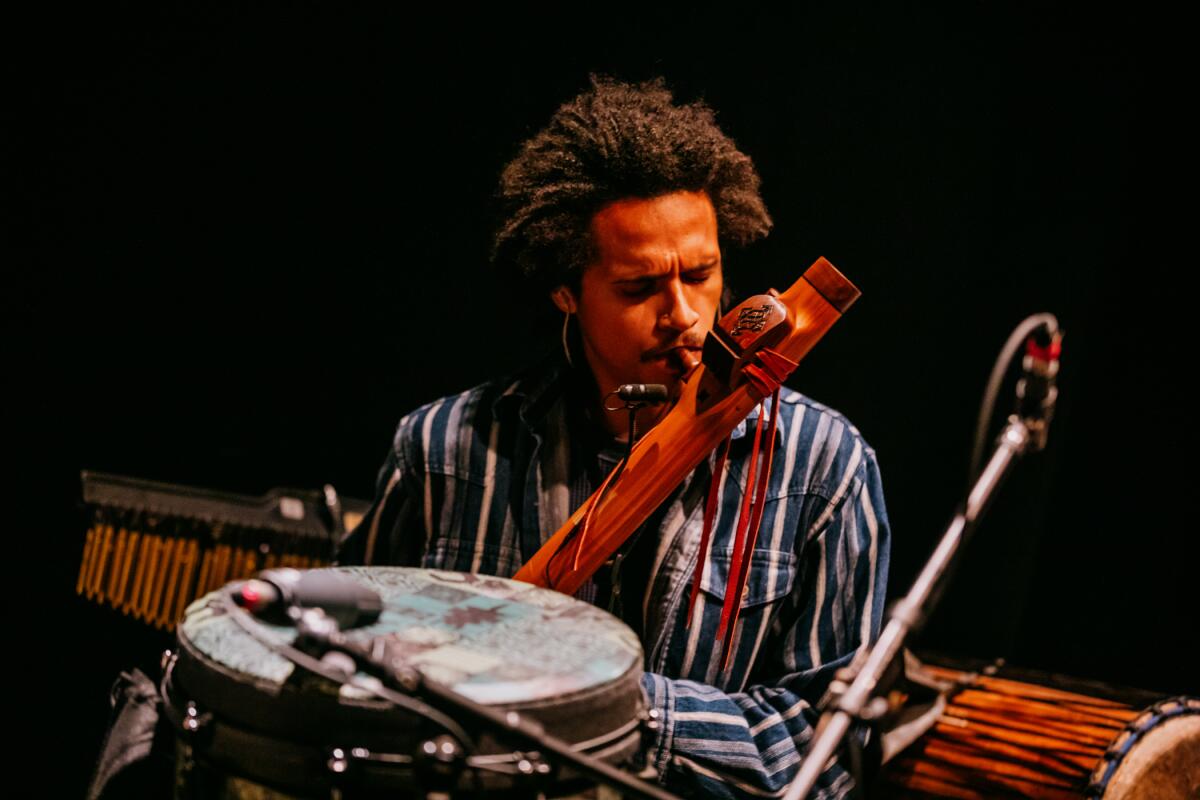
Sound designer, composer, musician Stan Mathabane in “The Brothers Size” at Geffen Playhouse.
(Jeff Lorch)
Ideally suited to the Geffen Playhouse’s second stage,“The Brothers Size” unfurls in darkened concentration. The audience surrounds the playing area as though witnessing a prize fight or highly athletic dance piece.
The black stage is encircled with white powder, creating a special zone of theatrical imagination. Musician, composer and sound designer Stan Mathabane supplies live accompaniment that lends the action a percussive build.
Suzu Sakai’s scenic design, Adam Honoré’s lighting and Juel D. Lane’s choreography work in tandem to intensify the sense of propulsive physical theater. Dede Ayite’s costumes conceal the characters’ individuality unnecessarily, but Sheibani seems opposed to superficial over-illustration and has the actors discover the roles anew through the personal textures they bring.
McKinney’s Ogun is the clearest presence on stage, a reflection not only of his more single-minded character but also of the lucidity of his playing. iLongwe gives vent to the furious restlessness inside Oshoosi without losing sight of the grief that’s animating it.
Mays’ Elegba is too cagey to be pinned down. He lays down temptations and then acts as though Oshoosi is simply following the dictates of his own wild nature. Here, Elegba’s jealousy is as complex as Ogun’s tough love. Oshoosi, drowning in emotional need, is only cast further at sea by the battle to control him.
McCraney, who translates buried anguish into monologues of rough delicacy rarely found outside the plays of August Wilson, finds the mythological patterns in lives that have been underrepresented and uncompassionately seen. For all the high testosterone conflict in “The Brothers Size,” the play makes a social justice case for the healing power of male vulnerability and the saving grace of brotherly (in the widest sense of the word) love.
‘The Brothers Size’
Where: Audrey Skirball Kenis Theater at Geffen Playhouse, 10886 Le Conte Ave., L.A.
When: 8 p.m. Wednesdays-Fridays, 3 and 8 p.m. Saturdays, 2 and 7 p.m. Sundays. Ends Sept. 8
Tickets: $45–$129
Contact: (310) 208- 2028 or www.geffenplayhouse.org
Running time: 1 hour, 30 minutes (no intermission)
-

 Minnesota1 week ago
Minnesota1 week agoReaders and writers: Plenty of thrills and danger in these Minnesota author’s mysteries
-

 Technology5 days ago
Technology5 days agoBreakthrough robo-glove gives you superhuman grip
-
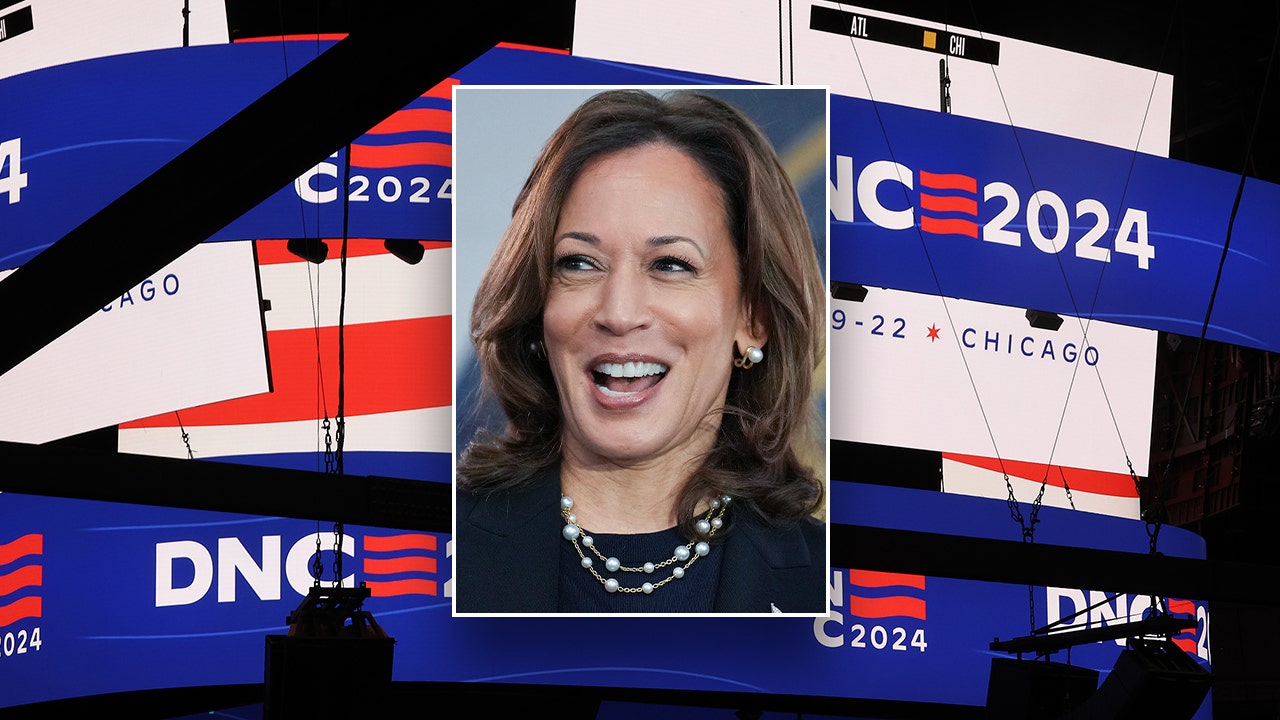
 Politics1 week ago
Politics1 week agoPolitical parallels between 1968 and 2024 as the Democrats return to Chicago
-

 News7 days ago
News7 days agoVideo: Biden Delivers Keynote on First Night of D.N.C.
-
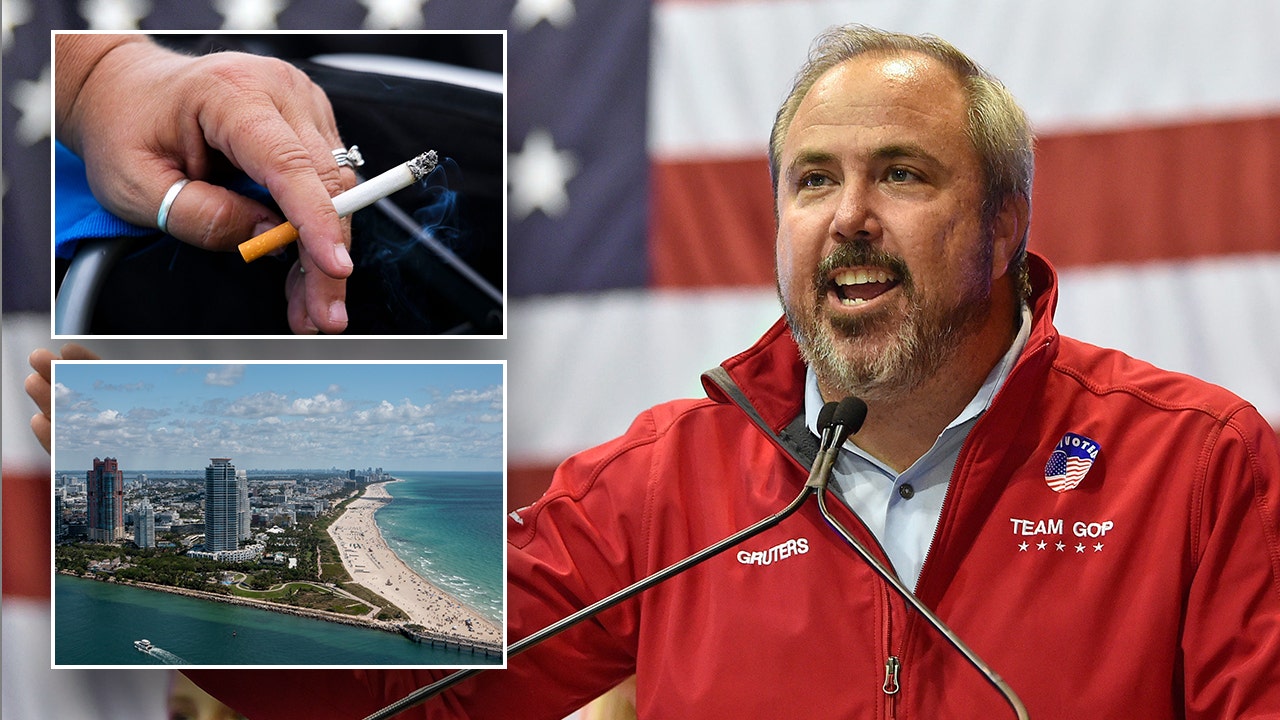
 Politics1 week ago
Politics1 week agoFlorida GOP lawmaker wants to ban smoking on streets, but supports legalizing marijuana
-

 World1 week ago
World1 week agoRussia-Ukraine war: List of key events, day 904
-

 News1 week ago
News1 week agoA woman is arrested for allegedly trying to steal Elvis' Graceland property
-

 World1 week ago
World1 week agoNigeria police working to secure release of 20 kidnapped medical students





